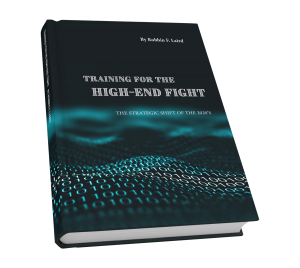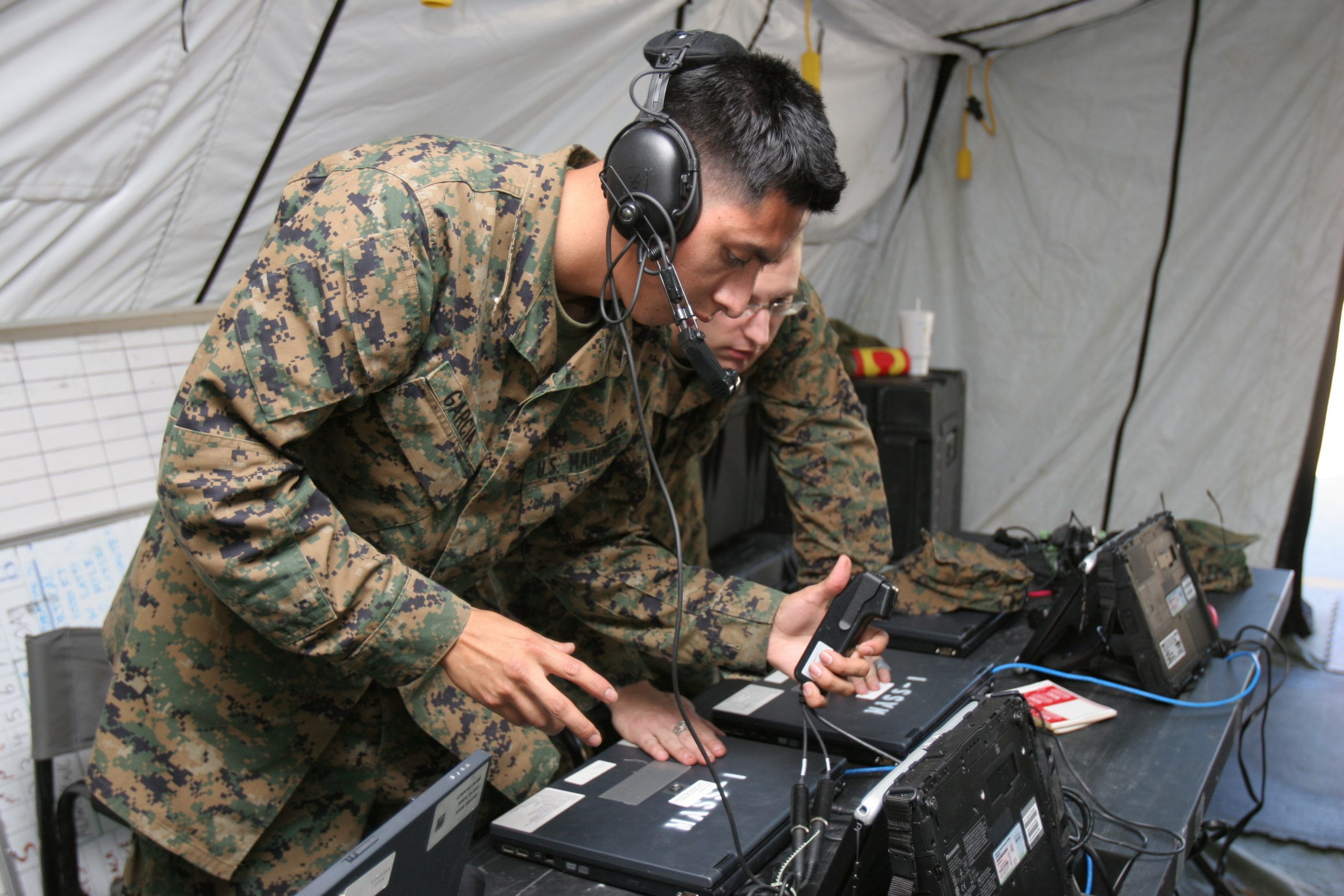By Robbin Laird
As the United States and core allies build out the way ahead for an integrated distributed force, a key challenge is shaping C2 systems which fully enable such a force.
C2 and ISR have been historically treated as separate terms but increasingly the sensor networks are integrable with C2 systems, and with the focus on a distributed force, how best to connect the distributed force with joint or allied forces which provide the critical combat mass to prevail in a crisis?
In my view, the kill web approach recognizes the reality of current C2 systems, which are that a combat cluster needs to take its C2 capabilities with it for that force to integrate in operations. The reach back to a larger force depends on networks – both ISR and C2 – which it does not directly control and may be denied in a crisis.
The force package needs to have its own integratability built in; the broader reach to other force elements will shape how a particular force package can affect the wider battlespace.
With the challenges facing U.S. and allied force with the forces being built by core adversaries, the importance of flexible basing is being highlighted. Sea basing is a core advantage along with an ability to operate multi-domain forces from a variety of bases which can intersect and operate with the sea bases.
For the Marines, this means that the reworking of the amphibious forces along with new approaches to basing are key elements of the force mix being worked.
At the heart of the challenge for force effectiveness is how C2 can be shaped to enable more effective force capabilities to be built and operate in a contested combat environment.
During my visit to 2nd Marine Aircraft Wing in early December 2020, I had a chance to discuss these challenges with the C2 professionals in Marine Air Control Group 28. We had a wide-ranging conversation on the intersection between the evolving tactical environment and C2 and will highlight a number of takeaways from that conversation. To be clear, these are my conclusions shaped by the discussion, but I am not attributing these conclusions to the group.
The first point draws upon my discussions with Col. Gillette at Marine Aviation Weapons and Tactics Squadron 1.
We discussed during my visit in September, and in earlier conversations, the challenge of shaping more effective Marine Corps integration with the Navy, and he highlighted the key questions: how can the Marines most effectively assist in sea denial and sea control missions, and how can the Marines help in controlling sea lines of communication?
These questions highlighted the key challenge of defining the tactical missions of the Marines in providing support for a strategic maritime campaign.
What they highlighted was that the focus was operations short of total war, and the importance of escalation management and control.
We discussed this during our session and the importance of shaping C2 approaches which would allow for the command of such missions posed as a key challenge.
How will different types of crisis situations be managed in which the force is distributed?
How best to ensure that the force can be integrated to the extent necessary to deliver the right kind of crisis management effect or deterrence?
The second challenge is simply moving from where we are to where the force needs to be.
This certainly can be seen with regard to the amphibious force. The amphibious force has not been built with the most advanced C2 available to the U.S. Navy, and the insertion of force from amphibious ships ashore has not been built around the construct of the sea-base managing the force ashore.
This means that two immediate challenges in the shift to flexible basing is the need to have more robust and flexible, from an expeditionary point of view, C2 onboard the ships making up an amphibious task force and new capabilities to connect the expeditionary force ashore with the expeditionary force afloat.
The third challenge is associated with forces inserted into expeditionary bases is ensuring they have the C2 capabilities needed to achieve their missions with the integrated force, and that they do not become combat orphans.
This challenge was highlighted with regard to building a web of C2 nodes or node basing, in the words of one participant in the conversation.
To be blunt, distributed C2 is hard to do in the first place. There clearly is growing effort to find ways to have rapidly stood up distributed C2 in an expeditionary basing sense which can reach to wider networks, but this is an aspiration more than a reality.
That is why in my view, working ways to integrate the amphibious task force is the preliminary challenge to be met, prior to being able to push small combat teams ashore and expect them with the current technologies to be able to manage C2 complexities putting them in the broader fleet wide firing solution sets.
The fourth challenge is the question of the decision-making authorities.
If the focus is upon operating from a variety of bases, who makes the decisions at the tactical edge? And how to do so, notably with regard to fires solutions?
Mission command is clearly involved but that will not be enough when it comes to shaping integrated fires solutions with a mixture of launch points, including from expeditionary bases involved.
The fifth challenge is the reset of C2 and ISR acquisition itself.
With the historical focus on platform dominance over “seamless” C2 and ISR data flows, how indeed will the kind of C2 be built into the force that allows a distributed force to achieve the levels of integratability needed?
One question posed by one of the participants raised a key question about the combat geography and force structuring.
The question: how do you visualize taking expeditionary basing and applying it to across the Atlantic as opposed to the Pacific?
This is a great question on many grounds.
The first is that the Russians, in my view, pose the most direct threat to the United States, given Putin’s actions, his nuclear build up, and the key role which the forces projected from the Kola Peninsula play in directly threatening U.S. forces and territory.
There is nothing abstract here; this is a direct and current challenge.
This is why the 2nd Fleet was re-established in 2015; and it is why the U.S. NATO relationship is deepening with what I called the UK-Nordic-Polish arc of defense in my recently published co-authored book, The Return of Direct Defense in Europe.
It also poses a very practical question of the relationship of 2nd MAW to 2nd Fleet going forward. In my own view, there are significant opportunities to re-shape that relationship and adopt some of the force re-structuring options on the table for the USMC.
Again, I would underscore that in my view the Russians are the most pressing direct threat, so ramping up capabilities for greater integration of 2nd MAW with 2nd Fleet make a great deal of sense to me.
The way I will conceptualize it is if one shapes an arc from North Carolina, to Norfolk, to Halifax and Newfoundland, to Iceland, to Greenland, to Norway and the Nordics, how best to deploy Marines in support of the naval integration missions being highlighted?
That is the question and the answers clearly could be multifold. Force packages of Marines highlighting strike, ASW and anti-surface warfare missions, C2 and ISR support missions, could be shaped and deployed across the territory of the arc from Canada to the Nordics.
How best to use the air capabilities of the Marines centered on 2nd MAW would be a key part of a reshaping function as well.
The lessons learned from this effort could be applied to the Pacific as well, and would indeed be different from island hopping approaches, but perhaps even more significant as well.
And the C2 side of this is crucial to shaping an effective integrable force.
And the way ahead would be paved by training, training, training as Admiral Nimitz ordered in the 2nd World War.
Or, to put in the terms discussed with the Marine Corps C2 experts, exercises, exercises, exercises, to determine how best to shape a more effective distributed force which could be survivable, sustainable and effective to an overall maritime campaign.
As one participant put it: “We need to increase our C2 communication dynamics in our exercises. We need to exercise our vulnerabilities and to find ways to enhance our strengths.”
It is hard to argue with that conclusion and one very much which fits into the core focus of my work for 2020, which has been upon training for the high-end fight.
Featured photo: Lance Cpls. Byron Garcia and Andrew Beckett test the equipment for the Direct Air Support Center behind the Marine Air Control Group 28 headquarters, Dec. 1. The Marines will be participating in the Marine Air Command and Control System Integrated Simulated Training Exercise Dec. 14-16 2010 that will test the abilities of MACG-28 and subordinate units before deploying to Afghanistan.
12.01.2010, photo by Lance Cpl. Scott L. Tomaszycki, II Marine Expeditionary Force
Also, see the following:
We are publishing a book in the first quarter of 2021, which focuses on training for the high-end fight and the key role which innovations and C2 and ISR play in the evolution of full spectrum crisis management warfighting.



